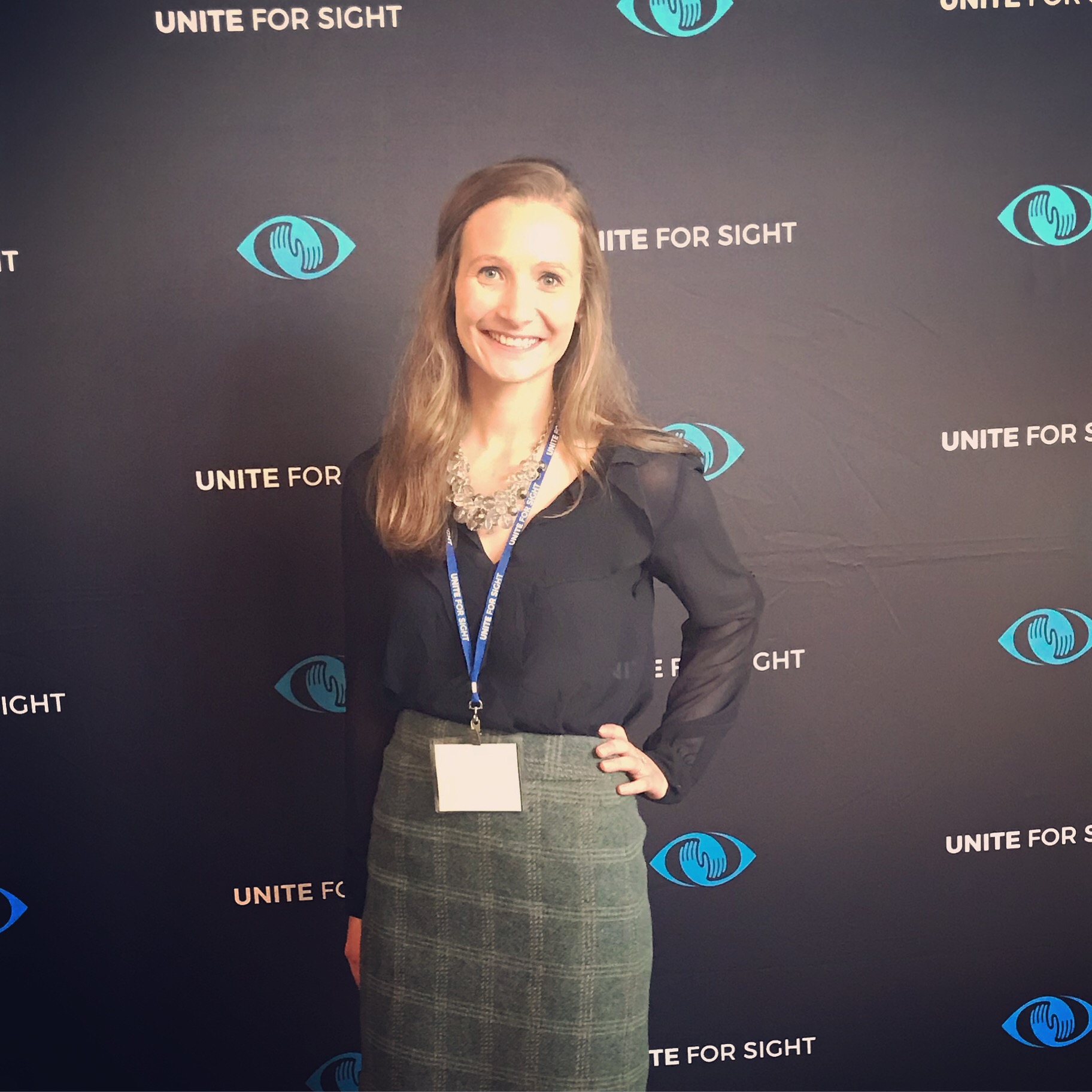One of the first things Hillary Smith noticed about the Social Impact Pitch competition at Unite for Sight’s Global Health & Innovation Conference last month was that it wasn’t a competition in the traditional sense. Yes, there were awards of $10,000 and $5,000 at stake, but the winner/not winner dichotomy didn’t really apply.
“In our field we’re all working for the same thing, public health, so really no matter what my personal outcome was in the competition, the ultimate goal of making strides to improve public health was reached,” Hillary explained.
She was one of more than 30 students, researchers and entrepreneurs from institutions across the United States and several countries to participate in the Social Impact Pitch competition at the conference, which was held at Yale University. Each presenter gave a five-minute pitch for a public health innovation, followed by 15 minutes for discussion and mentoring with two experts. The goal is to foster collaboration on innovative ideas, programs and organizations.
Hillary’s project, titled “Development of a Local Heat Stabilized Rice Bran Food Product for Maternal and Child Consumption in West Africa,” based on research she has been doing with the Elizabeth Ryan Lab at CSU – Dr. Ryan is a ColoradoSPH at CSU faculty member in the Animals, People and the Environment concentration – and with Dr. Ousmane Koita and his team in Mali to develop a rice bran food product that could help Malian infants to improve child health outcomes. Specifically, the research has focused on improving growth and decreasing diarrheal diseases.
“This product also has the potential for continental expansion throughout Africa as so many resources have been invested in enhancing rice production in this region,” she said.
Team-based research
Her research focused on analyzing metabolomics data from a dietary intervention trial with infants conducted in 2015. She worked with Dr. Ryan and Dr. Koita to discuss potential program implementation and dissemination plans, development of sustainable heat stabilization technology, marketing strategies, food safety testing recommendations and quality control protocol implementation plans.
Through analyzing the data, “the improvements in growth and decreases in diarrheal disease, as well as the micronutrient, protein and fiber content of rice bran that was evident in dried blood spot metabolomics really solidified in  my mind that this product had huge potential to mitigate malnutrition, diarrheal disease and stunting in this population,” Hillary explained. “We have community support to develop a rice bran product from locally sourced rice bran and our plan was based on sustainability, local support and cultural acceptance, economic development potential and alignment with public health investments in the community. So really it was a no-brainer for me. This conference was an opportunity to advocate on behalf of a community to develop a sustainable solution to improve child health in Mali.”
my mind that this product had huge potential to mitigate malnutrition, diarrheal disease and stunting in this population,” Hillary explained. “We have community support to develop a rice bran product from locally sourced rice bran and our plan was based on sustainability, local support and cultural acceptance, economic development potential and alignment with public health investments in the community. So really it was a no-brainer for me. This conference was an opportunity to advocate on behalf of a community to develop a sustainable solution to improve child health in Mali.”
At the conference, Hillary advanced to the semifinalist round for the innovation prize, presenting twice and receiving feedback and mentoring from experts in the field. She said her MPH coursework played an important role in this experience because “key parts of my pitch for rice bran product development were based on elements of appropriate and responsible community program development that I have learned in classes,” she said. “Asking questions like, is the community ready to address this problem? Can this project be sustainable here? Is there community support? Is the project evidence based and culturally appropriate?”
Hillary will graduate this month in the Global Health and Health Disparities concentration and said she plans to continue pursuing opportunities in global health, fueled in part by what she learned attending and presenting at the conference.
“So many people have great ideas and passion for what they are doing or wanting to do in the world,” she said. “It was inspiring to see people working to improve global public health.”

